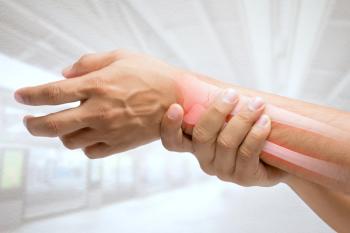
Short sleep and low bone mineral density
Postmenopausal women who reported 5 hours or less of sleep per night had increased rates of low bone mineral density (BMD) and osteoporosis, according to research from JBMR.
Postmenopausal women who reported 5 hours or less of sleep per night were modestly more likely to have low bone mineral density (BMD) and osteoporosis of the hip compared to postmenopausal women who reported sleeping the recommended 7 hours per night, according to a
“Previously, we found that women with short, long and disturbed sleep had more falls and fractures,” said principal investigator
Methods
The study was composed of the WHI
Hip, spine, and whole body DXA scans were performed with a Hologic QDR scanner by certified and trained operators. Bone measures of interest included BMD of the total body, total hip, femoral neck and spine. Women were further classified as having low bone mass (Tâscore between −2.5 and − 1) and osteoporosis (Tâscore ≤ −2.5) compared to normal (Tâscore ≥ −1). Sleep behavior was assessed at WHI baseline via selfâadministered questionnaires, whereas sleep quality was evaluated using the WHI Insomnia Rating Scale (WHIIRS).
Findings
After adjusting for age, DXA machine, race, menopausal symptoms, education, smoking, physical activity, body mass index (BMI), alcohol consumption, physical function and sleep medication usage, the investigators concluded that women reporting 5 hours or less of nightly sleep had higher odds of low BMD and osteoporosis of the hip versus women who reported 7 hours of nightly sleep: adjusted odds ratio [AOR] = 1.22; 95% confidence interval [CI]: 1.03 to 1.45, and AOR = 1.63; CI: 1.15 to 2.31, respectively. For spine BMD, women with 5 hours or less of nightly sleep also had higher odds of osteoporosis vs. the 7-hour group: AOR = 1.28; 95% CI: 1.02 to 1.60.
“However, associations of sleep quality and DXA BMD failed to reach statistical significance,” Dr. Ochs-Balcom told Contemporary OB/GYN. “Still, the higher risk of osteoporosis in the short sleep group is equivalent to 1 year of aging.”
Conclusions
Dr. Ochs-Balcom said it is not surprising to observe that sleep has an influence on BMD. “Insufficient sleep is linked to many different chronic conditions, and now bone health can be added to the list,” she said. “Getting sufficient sleep is recognized as important for preventing chronic disease, along with not smoking, being physically active, limiting alcohol consumption and maintaining a healthy weight.”
In addition, while the study has only limited clinical significance, “it can help serve as a reminder to be conscious of sleep behavior and try to improve it where possible,” Dr. Ochs-Balcom said. “Evidence suggests that about one-third of Americans are not getting 7 hours of sleep per night.”
Among the ways to improve sleep hygiene are having a consistent bedtime routine, putting down the electronics before bedtime and regularly exercising, according to Dr. Ochs-Balcom. “Longitudinal studies are also needed to confirm the cross-sectional effects of sleep duration on bone health and explore associated mechanisms,” she said.
Disclosures:
Dr. Ochs-Balcom reports no relevant financial disclosures.
Newsletter
Get the latest clinical updates, case studies, and expert commentary in obstetric and gynecologic care. Sign up now to stay informed.








